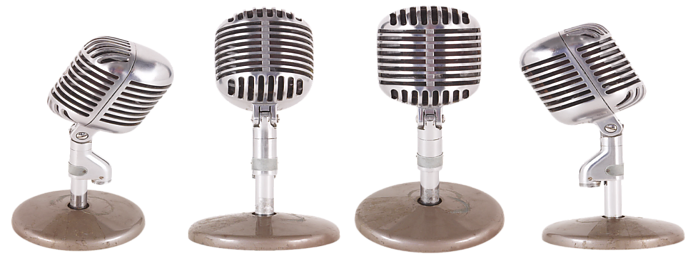Choosing The Right Microphone For Video Recording: A Comprehensive Guide
 Introduction
Introduction
In the world of video content creation, audio quality is often underestimated but crucial to the overall success of your project. Whether you’re shooting vlogs, interviews, films, or any other type of video, selecting the right microphone is essential for capturing exceptional audio. In this blog post, we’ll walk you through the process of choosing the perfect microphone for your video recording needs, covering everything from understanding your recording requirements to microphone types, best practices, and accessories.
Understanding Your Video Recording Needs
1. Assessing the Environment for Video Recording
Before diving into microphone options, consider the environment where you’ll be recording. Are you shooting indoors or outdoors? Is it a controlled studio setting or on-location? Understanding the environment will help you choose a microphone that can handle potential challenges such as wind, background noise, and echoes.
2. Identifying the Type of Video Content
Different types of video content require different microphone setups. For vlogs, a compact and portable microphone might be ideal, while interviews may require a microphone that captures multiple voices. Films and documentaries often benefit from a combination of microphones to ensure the best sound quality.
3. Considering Audience Expectations for Audio Quality
Think about your audience’s expectations for audio quality. High-quality audio enhances viewer engagement and retention, so investing in the right microphone is essential. Poor sound quality can lead to viewers clicking away, regardless of how visually appealing your content may be.
4. The Impact of Poor Sound Quality on Viewer Retention
Studies have shown that viewers are more likely to watch a video with good audio quality even if the video quality is lower, but the reverse is not true. Viewers are more likely to abandon a video with poor audio quality, making it a crucial factor in viewer retention and engagement.
Matching Microphone Features with Recording Situations
The Microphone Toolbox: Types and Uses
1. Overview of Microphone Types
Microphones come in various types, each suited for specific recording situations. Some common microphone types include dynamic, condenser, and ribbon microphones. Dynamic microphones are robust and suitable for live events, while condenser microphones are more sensitive and ideal for studio recordings. Ribbon microphones offer a vintage sound and are often used in professional audio production.
2. Directional Characteristics
Microphones have different directional characteristics, including cardioid, omnidirectional, and bidirectional patterns. Cardioid microphones pick up sound mainly from the front, making them suitable for isolating a single sound source. Omnidirectional microphones capture sound from all directions, making them great for capturing ambient noise. Bidirectional microphones capture sound from the front and back and are useful for interviews and duets.
3. Specialized Mics for Video
In video recording, you may also encounter specialized microphones such as lavalier (lapel) microphones, shotgun microphones, and boundary microphones. Lavalier mics are often used for hands-free recording, while shotgun mics have a narrow pickup pattern ideal for capturing sound from a specific direction. Boundary microphones are designed for tabletop and surface use, making them suitable for conferences and presentations.
4. Wired vs. Wireless Options
Consider whether you need a wired or wireless microphone setup. Wired microphones provide a reliable connection but limit your mobility. Wireless options offer more flexibility but may require additional equipment and may be susceptible to interference.
Must-Have Microphone Accessories for Video Recording
In addition to selecting the right microphone, it’s essential to have the necessary accessories for optimal audio quality. Some must-have accessories include shock mounts to reduce vibrations, windshields to minimize wind noise, and boom arms or microphone stands for precise positioning.
Best Practices for Capturing Exceptional Audio
1. Positioning the Microphone for Optimal Sound Capture
Proper microphone placement is crucial. Experiment with microphone placement to find the best position for capturing clear and balanced audio. Be mindful of microphone proximity to the sound source and any potential obstructions.
2. Controlling Room Acoustics and Reducing Background Noise
Pay attention to room acoustics and background noise. Use acoustic panels or foam to minimize reflections and echo in your recording space. Additionally, consider using noise-cancelling software or plugins during post-production to reduce unwanted background noise.
3. Techniques for Syncing Audio and Video in Post-Production
In some cases, you may need to sync audio and video in post-production. Ensure you have the necessary software and skills to align your audio and video tracks seamlessly.
4. Maintaining Audio Equipment for Longevity and Consistent Performance
Regularly maintain your audio equipment to ensure consistent performance and longevity. Clean your microphones, cables, and connectors, and store them in a dry and safe environment when not in use.
5. Leveraging Expert Tips and Tricks for Professional-Quality Audio
Stay up-to-date with expert tips and tricks in the field of audio recording. Join online communities, forums, or attend workshops to learn from experienced professionals and continually improve your audio recording skills.
Conclusion
Choosing the right microphone for video recording is a critical step in producing high-quality content that captivates your audience. By understanding your recording needs, exploring microphone types and directional characteristics, investing in essential accessories, and following best practices, you can ensure that your audio quality matches the visual excellence of your videos. Remember that exceptional audio is a key ingredient in creating engaging and memorable video content.
If you have a video project that you would like to undertake, do not hesitate to call Alan on 07539141257 or 03332241257, or +447539141257 or +443332241257, you can schedule a call with Alan on https://calendly .com/alanje or drop an email to alan@alpusgroup.com.
0 Comments